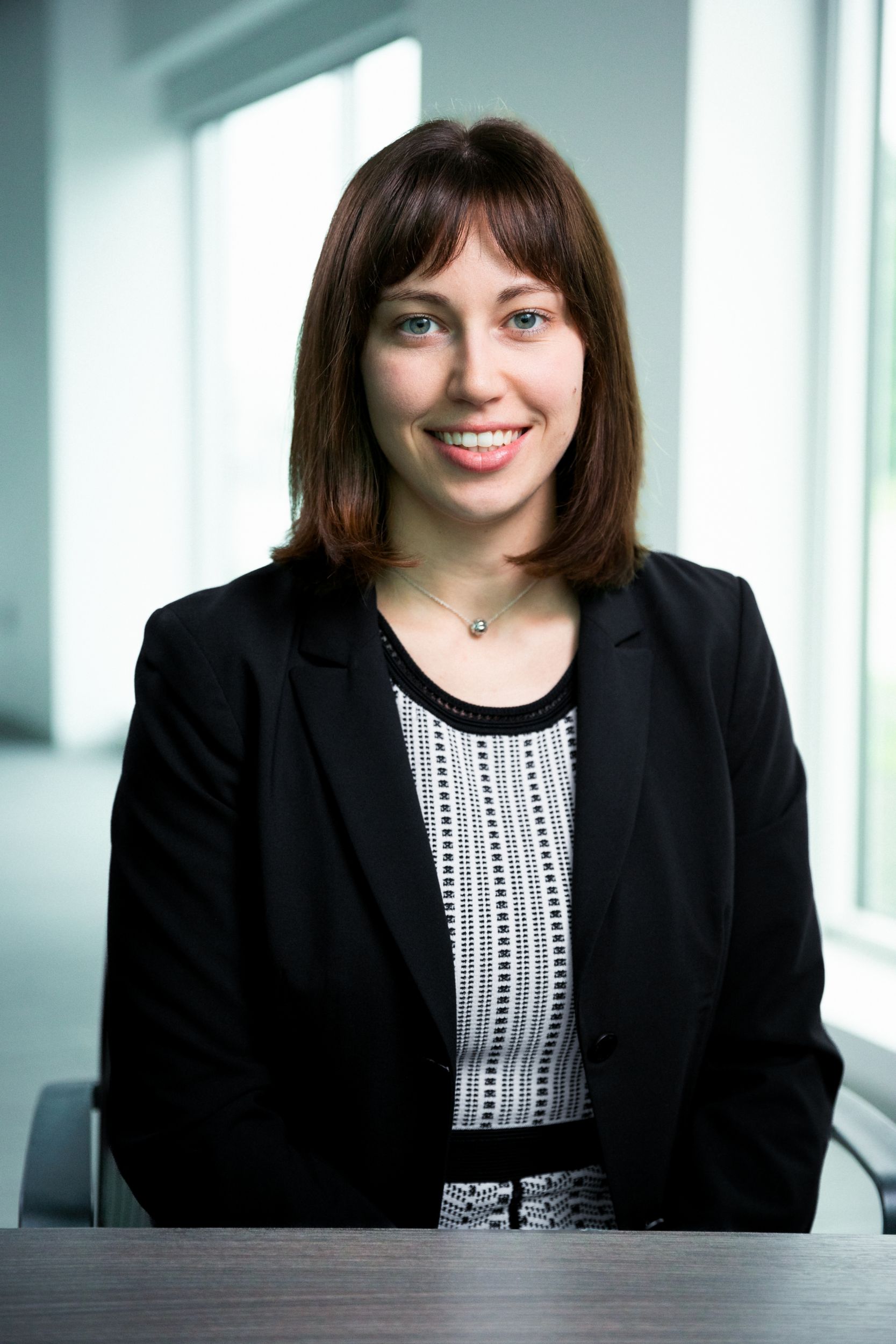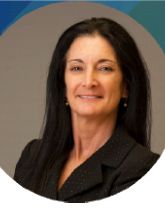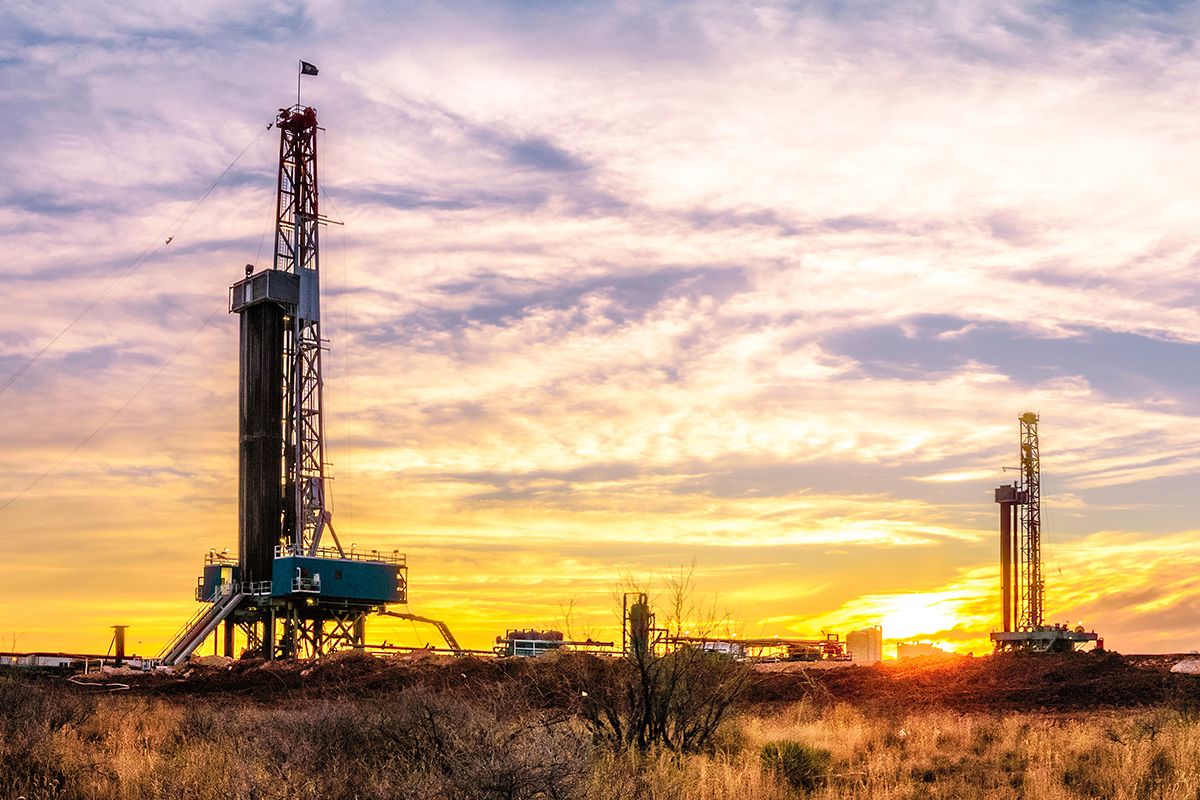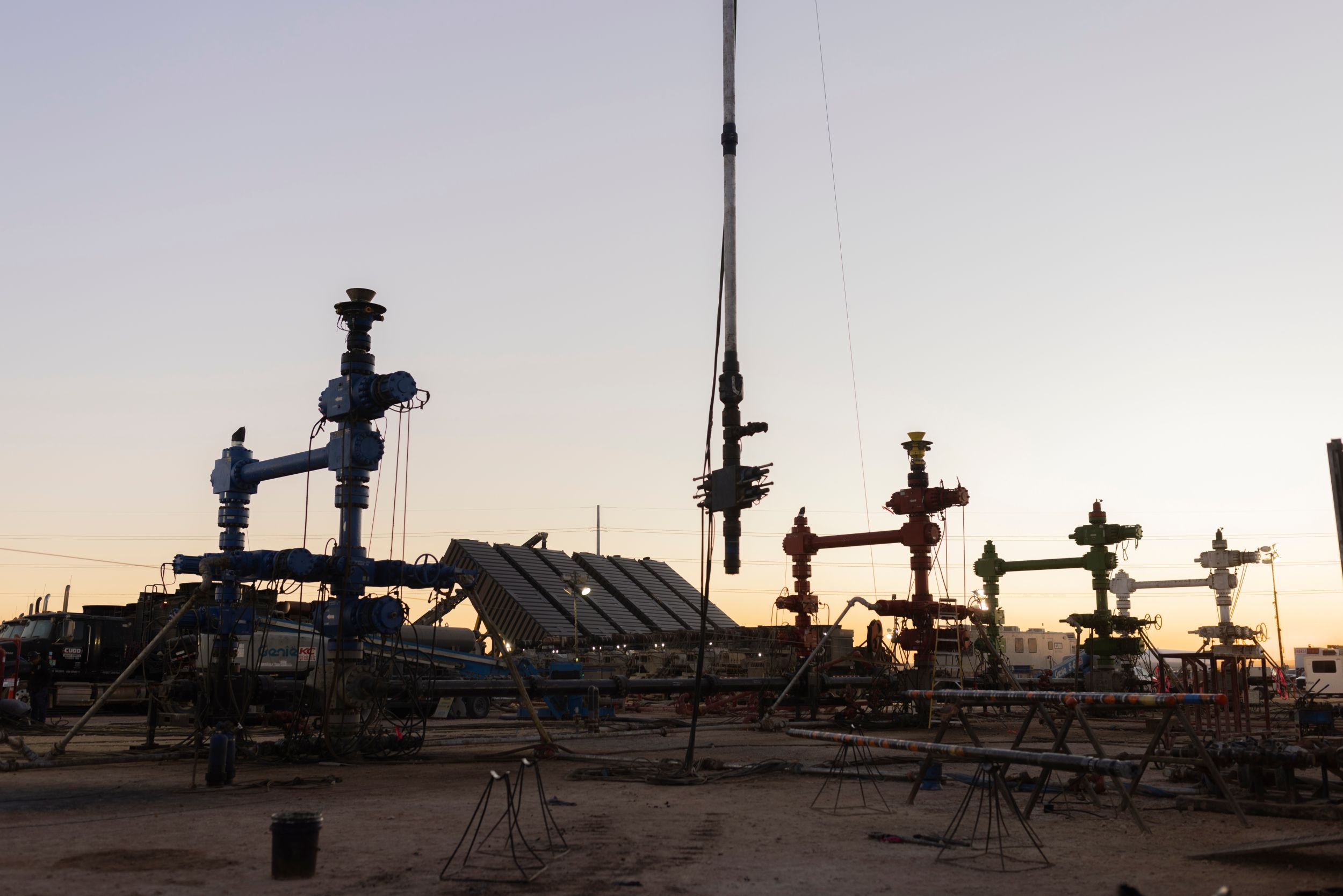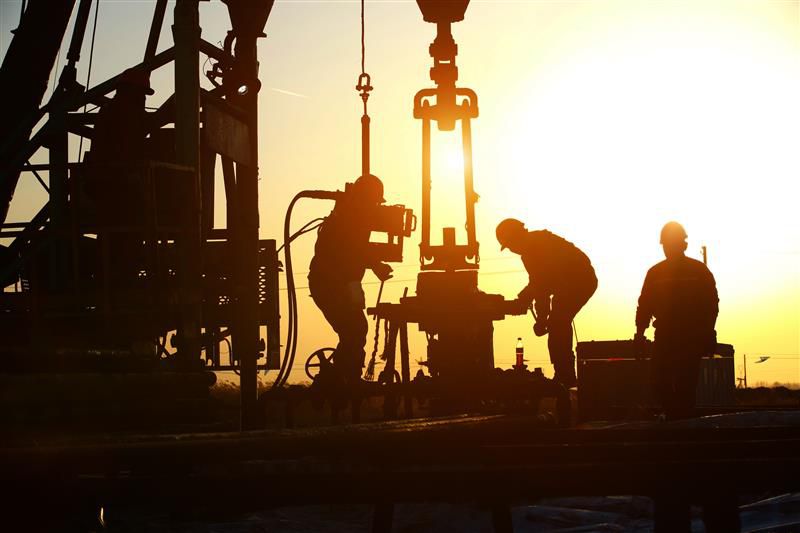Read the full episode transcript
00:00:00 Speaker 1
This episode of The Energy Pipeline is sponsored by Caterpillar Oil& Gas. Since the 1930s, Caterpillar's manufactured engines for drilling, production, well service, and gas compression. With more than 2, 100 dealer locations worldwide, Caterpillar offers customers a dedicated support team to assist with their premier power solutions.
00:00:26 Speaker 2
The Energy Pipeline is your lifeline to all things oil and gas, to drill down deep into the issues impacting our industry. From the frack site to the future of sustainability, hear more about industry issues, tools, and resources to streamline and modernize the future of oil and gas. Welcome to The Energy Pipeline.
00:00:49 Delfina
Once again, The Energy Pipeline audience, we are coming at you from the Gas Machinery Conference in Phoenix, Arizona. I am Delfina Govia, your host for today, filling in for the wonderful, fabulous Jordan Yates, who could not be with us, and her co- host, Lizzie Hurt from Caterpillar. Lizzie, thank you for joining me here today and getting this job done.
00:01:12 Lizzie
Thanks, Delfina. Happy to be here.
00:01:13 Delfina
We are privileged to have Dr. Professor Daniel B. Olsen, who's a professor of mechanical engineering at the Colorado State University. Professor, welcome.
00:01:27 Dan
Thank you.
00:01:28 Delfina
So, Dr. Olsen, can we get started? Can we jump right in?
00:01:35 Dan
Yes, and you may call me Dan.
00:01:37 Delfina
Ah, thank you.
00:01:38 Lizzie
Let's start off with a little bit about you. Dan, can you give us a little bit of background on your career, and then also a little bit of information on the research done at Colorado State University for the oil and gas industry?
00:01:52 Dan
Sure. Yeah. My career started back in the'80s, so I graduated with a degree in physics in 1987, and shortly after that started going more into the engineering path, mechanical engineering, and worked... I got a master's at Oregon State, and then spent about six years in industry, mostly in aerospace, and then went back to school for a PhD in 1995. And I found my way to Colorado State University, and Bryan Willson had started the large bore engines lab there. The first engine that they installed was a Cooper-Bessemer GMV integral compressor engine. And it has a 14- inch stroke, or 36- centimeter stroke. And those engines are used in gas compression, and very unique engines. They're integral compressor engines, so the compressor is integrated with the engine. So, I found my way to that lab, and that's where I worked on a PhD for the next four years, and then graduated in 1999, and been there ever since. I got a regular faculty position in 2006, and I've been working with students and doing research there since then.
00:03:42 Lizzie
And what kind of research do you guys do? Talk about... Give us an example.
00:03:46 Dan
Sure. Yeah. It goes through phases. Right now there's a lot of emphasis on methane emissions, so I guess we'll probably come back to that. But when I started in'95, there was a lot of technology development for these large integral compressors, specifically ignition systems, like pre- combustion chambers and fuel injection systems, high pressure fuel injection, to improve emissions and efficiency so they can keep in compliance. So, those engines, a lot of them are over 50 years old.
00:04:30 Lizzie
Wow.
00:04:31 Dan
Yeah. And they run at 300 RPM, so they're just a little faster than a sewing machine. It's kind of therapeutic. If it didn't shake the whole building, it would be more therapeutic. So, that's how the work at the lab began, and I think I mentioned Bryan Willson is the one who started the lab. And then over the years, we've added more and more engines. And a big part of that has been our collaboration with Caterpillar.
00:05:06 Delfina
So, you said methane emissions. I read about a program called REMEDY. Is that your baby?
00:05:16 Dan
Yes.
00:05:18 Delfina
So, let's talk REMEDY. What is REMEDY?
00:05:20 Dan
So, REMEDY is... The acronym is Reducing Emissions of Methane Every Day of the Year. And the government seems to like their acronyms, so there seems to be an acronym for every program like that. And that program actually addresses methane slip from engines, so exhaust methane, and also crankcase gas emissions. It also addresses mining ventilation, so methane emission from coal mines, and also flares. So there's three elements of the REMEDY program.
00:06:08 Delfina
And you said that the government likes their acronyms. Am I then correct to assume that this is a program that is either funded or sponsored with the Department of Energy?
00:06:23 Dan
That's correct. Yeah. The Department of Energy is funding this, in specifically ARPA- E. So that's Advanced Research Projects Agency- Energy. The dash E stands for energy. And ARPA- E focuses more on, I guess high risk, high potential reward projects. And they're very much focused on commercialization and implementation in the marketplace.
00:07:02 Delfina
Okay.
00:07:04 Lizzie
So, how do you take that research that's done in a lab at a research institution and take that to industry? I inaudible understand how that happens.
00:07:13 Dan
Sure. Yeah. Well, the first key there is to collaborate with a commercial partner like Caterpillar. So, most of our projects now, we are collaborating with a commercial partner, and so in this case, we're collaborating with Caterpillar. And the way it gets to the marketplace, number one, Caterpillar has a gated process for taking a product from low TRL, so that's technology readiness level, to commercialization. So, that process is clear, and these gates that the product needs to get to, it has to go through all of them before it becomes a commercial product. ARPA- E has some similar language, kind of a parallel path, that they implement as well for commercialization. But in this case, we're doing the research in the lab, so that's ongoing right now. We just recently had a really successful test on this project. We got the crankcase... The product that we're developing is a closed crankcase gas recirculation system. And so you take the crankcase gas, which for these engines is normally vented at the atmosphere, and it actually contains a significant amount of methane. And as part of this REMEDY proposal, we were actually the only ones that had that in our proposal, so we automatically got funded for that.
00:09:13 Delfina
Because you're not flaring, you've closed loop.
00:09:15 Dan
Well, they don't flare that. Typically in the oil and gas industry, it's just vented to ambient, to the atmosphere. Because the engines, they need to run 24/ 7. High reliability is critical. And so that gas though, if it's filtered and processed properly, can be recirculated into the intake. So, that's the technology we're focusing on. And circling back to your question, to get the product into the marketplace, we need to do a field demonstration, and so next year we're going to demonstrate the product in the field. We're going to do a one- year longevity test or durability test.
00:10:10 Lizzie
That's exciting.
00:10:11 Delfina
I know.
00:10:12 Lizzie
That'll be interesting. There's your follow- up episode, Delfina. You can check in in a year.
00:10:17 Delfina
Yeah, definitely.
00:10:18 Lizzie
That's a fantastic example, the closed crankcase gas recirculation system. Are there any other examples, development of technology for reducing methane emissions that you share?
00:10:31 Dan
Well, we're doing... Right now we're working on another proposal with Caterpillar, and an unsolicited proposal to another DOE office. And there's a few different pieces of that, methane emissions. So, one of them is in cylinder methane emissions. So the crankcase gas, that's the gas that gets past the rings. So you have the gases above the piston, and then the gases that slip past the ring, those go into the crankcase, and then those need to be dealt with. The gases that stay in the combustion chamber, which is most of them, those combust, and then you have methane that goes out the exhaust due to combustion inefficiency. And there's a couple different ways that we're going after those. One is new piston designs with lower crevice volumes, reduced regions where methane can be trapped and escape combustion. And then also potentially reformed natural gas. So we take a small portion of the natural gas going to the engine, we reform that and get hydrogen and carbon monoxide, which are more reactive than methane, blend that with the fuel, and then that goes into the combustion chamber to help improve the methane reduction efficiency. And then as a final last possible means for reducing methane would be after treatment. We'd prefer not to do that, because that means that we're not utilizing that methane in the engine to generate work. So, we're looking at aftertreatment technologies as well. So those are some examples for that class of engine, which is a four- stroke lean- burn engine. And we're doing other work with the large two- stroke engines as well. So there's several techniques that we're working on there as well.
00:13:00 Lizzie
Great. No, those are some fantastic examples.
00:13:03 Delfina
So what I'm hearing, and tell me if I'm wrong, you keep saying" we," and I'm assuming that that" we" is involving these students.
00:13:14 Dan
You are correct.
00:13:17 Delfina
Talk to us about that. Who are the students that are involved in this? What exactly are they doing? Talk about that. I know that other students want to hear about these types of opportunities that they have, because the hands- on learning is just tremendous.
00:13:34 Dan
Sure. That's right. Yeah. I always say" we," it's a team effort. And so in my group, I have several full- time staff, one postdoc, two engineers. And then, let's see, 15 students. So about half of those are graduate students, and about half of them are undergraduates. And you mentioned the hands- on learning, the hands- on opportunities that they get. It's unsurpassed. The opportunity that we have to do these projects with Caterpillar and other manufacturers, involves a lot of hardware, a lot of testing, everything from designing brackets and assembling brackets on the engine to do something simple, like hold wire that you're running to a sensor, from actually helping to run the engine and then analyze the data. So, it's a wide range of activities that the students get experience with.
00:14:52 Delfina
Are these young folks generally mechanical engineers? Or do you have... You just said, you mentioned the data. Do you have any students pursuing data degrees?
00:15:08 Dan
We tend to go for mechanical engineering students, because that's where I teach thermal science courses in the mechanical engineering department, so I interact with the mechanical engineering students the most. We're not opposed to looking at other majors by any stretch. I have one student who's a civil engineer, so he worked for us last year, his name's Ben, and he did a great job, so he's actually on the Caterpillar project this year. Yeah.
00:15:45 Delfina
So, give us an example of what a student might be doing, where they can interact with the industry folks like at Caterpillar. I mean, are they just at the school, or is there some sort of environments where there's interaction with Caterpillar as well, or other partners that you might have involved?
00:16:10 Dan
Yeah. They definitely get interaction with the commercial partners. So we have regular update calls with the commercial partners and also with, say, the Department of Energy, and the students generally join those calls. The undergraduate students have a ridiculous number of classes.
00:16:35 Delfina
It's hard. Yeah.
00:16:36 Dan
So a lot of times they might just work a few hours a week and can't join the meetings. So they get that interaction on these update calls. And then when Dave Montgomery, he's our main point of contact at Caterpillar, and so he frequently comes to visit the lab, so they get interaction with Dave and other Caterpillar staff. And the students also have other opportunities with Caterpillar in particular. Caterpillar has maybe five engagement areas. There's the funded research, whether that's directly from Caterpillar or co- funded with the Department of Energy. Caterpillar also does co- ops and internships. They come to the career fair. Dave Montgomery teaches a graduate class, and I'm trying to think of inaudible included everything. Oh, senior design. So they fund senior design projects, and then CSU inaudible the powerhouse, we call it, it used to be an old power plant where the research is done, that is designated internally at Cat as a Cat lab. That's a category. So, lots of opportunities for the students to engage with Caterpillar in particular. And then in general, in research contracts, they also have lots of opportunities to engage.
00:18:30 Lizzie
Sounds like an awesome way for students to get a lot of depth in type of fields. I'm hearing you're saying that the students are working a couple hours throughout the week. I mean, it sounds like this is year- long, through the summer maybe. What's it like for the students?
00:18:49 Dan
Hopefully they work 10 hours a week. That's kind of ideal for an undergrad. And then for the graduate students, it's 20 hours plus. But then during the summer, they generally work full- time. So, we try to schedule our projects so that maybe there's more hands- on construction work to be done during the summer, because we know we're going to have the students for more hours during the summer.
00:19:22 Delfina
I'm definitely getting jealous listening to this, aren't you?
00:19:27 Lizzie
Yeah. When you do an internship, it's such a brief amount of time.
00:19:30 Delfina
I know.
00:19:31 Lizzie
When you get the end of it, you're like, " Now that I know what I'm doing, I'm done." So it's nice to continue that throughout the school year. Right?
00:19:38 Dan
Yeah. Yeah, that's right.
00:19:40 Delfina
Well, here's another one that I just need to know. When you actually go... So, Lizzie asked a great question earlier. How do you get something that you're working on actually commercialized? How do you get it to market? You talked about how you're pretty soon, I think you said next summer or next year, you're going to be doing some pilot projects, right? You said you're going to try to do some testing.
00:20:03 Dan
Field demonstrations.
00:20:04 Delfina
Field demonstrations, that's the word you use. Yes. So, do the students get to be involved in the field demonstrations?
00:20:09 Dan
They do. Yes, they do. Yeah. That will start in the... Hopefully it'll start around February, this particular project we have with Caterpillar. And we have a midstream partner that has agreed to host the test. And so the students will be involved in... They're going to have to go and get the safety training so they can go on- site and wear the hard hats and steel- toe boots and all that stuff. And then they'll be involved in the design of the hardware that we'll set up to monitor the engine and the hardware that we put on the engine. And then also, there'll be trips to the site where we do sort of an extended test, like an all- day emissions test, and they'll be involved with that as well.
00:21:09 Lizzie
What are some of the challenges that students face when they're involved with these types of projects?
00:21:16 Dan
Yeah. I would say the first challenge that they have is, they've done their coursework, so they know how to apply a formula, to solve problems, to get an answer for homework or an exam, but then now they're faced with a real world problem that maybe wasn't covered in their courses. Just something simple, like how do I run water from this source to something on the engine that I want to cool? And the options for what tubing you use, what connectors you use, what fittings, all of that is a learning experience that's typically not taught in class. So, they get that kind of hands- on design and also fabrication experience. So, that's usually a challenge. And it doesn't matter what level they are, they could be a graduate student, but there's a lot of learning that takes place when you actually have a hands- on project.
00:22:34 Lizzie
That's fantastic that they're getting that during school, because I think even as graduates of engineering into the real world, there's a lot of things that you just haven't learned yet, you got to learn on the fly. Fantastic opportunity.
00:22:47 Dan
Yes.
00:22:47 Delfina
So, one of the things that is also striking me is that you just finished addressing the opportunities and the challenges for these young people in the technical side of it. But I'm also picking up that, if they're sitting in on calls with Caterpillar, if they're going out and working with the midstream host eventually, that there's more of a real world, we're solving a business problem aspect to this. Am I catching that correctly?
00:23:24 Dan
Yes. Yeah. Business problem and a real world type problem that needs to be solved, so there's certain limitations and certain boundaries that you have to stay within. I mentioned the safety aspect. I mentioned the safety aspect...
00:23:51 Delfina
Ladies and gentlemen, remember, we're at the GMC conference and they just started up some big session on the stage, so we're going to ask Dan to talk just a little bit louder. Sorry, Dan. Please continue.
00:24:05 Dan
No problem. Okay. So, there's the safety aspect to it, and then there's the aspect that you're in a field site, and there's certain ways that the companies, the midstream companies in this case, that they need to do things. It's an environment where fire safety is critical. So there's a designation called Class 1 Div 2 electronics, so that needs to be adhered to. So, things like that. And then you mentioned reporting to sponsors, so the students need to learn to communicate in a meeting like that and give a synopsis of what they've been doing in a short period of time. And so that's a good experience as well. And putting together slides, that's usually a part of it.
00:25:10 Delfina
Do they get to interact with the DOE at all?
00:25:14 Dan
Yes, they do. When the Department of Energy has an on- site meeting, they'll come and visit us. And then normally when that happens, I'll have everybody give a presentation, talk to their own slides. So yeah, absolutely.
00:25:33 Lizzie
inaudible unique.
00:25:33 Dan
Yeah.
00:25:34 Delfina
Heck yeah. Heck yeah.
00:25:37 Dan
Yeah. And the Department of Energy folks, they like coming to our lab. The last visit we had, the guy, our contract monitor, I could not get him to leave the lab. He was watching the... We were doing a demonstration with a running engine, and he just didn't want to leave.
00:25:57 Lizzie
Can you paint the picture of that lab for us? How many engines, how many test cells inaudible?
00:26:01 Delfina
How big is it?
00:26:02 Dan
Sure. Yeah. The entire building is 100, 000 square feet.
00:26:08 Delfina
Holy moly.
00:26:09 Dan
Yeah. Well, that includes different... That includes a new section and an old section. So, the old section was the old Fort Collins power plant, that's about 30,000 square feet. It's a old brick building. It was built in the'30s and then decommissioned in the'60s. It was a coal- fired steam power plant. So, now we have engines in there, we have about 10 instrumented engines, mostly industrial, so they're non- automotive, I'll say. Larger, mostly natural gas engines, but also some diesel. So it's a large kind of open facility, more like a compressor station. If you walk in a lot of university labs, or even a place like Southwest Research, and the tech center at Caterpillar, the engines are in enclosed areas. So, our lab is more like a compressor station where it's kind of an open... It's organized more in an open fashion. And we have four concrete structures where the steam turbines used to go, so that's where we have our heaviest engines. And for example, the Caterpillar 3516J engine is on one of those platforms, because it's a large engine, one megawatt. And we have a new solar gas turbine, 3. 4 megawatts, and that one bridges two of those platforms. It sits on two of them.
00:28:01 Delfina
Cool. Very cool. Okay. Let me ask you a question. We're going to have to wrap this up, because they're probably going to start blaring in the background again on us. I've noticed, especially given that I have a child that's about to graduate from an engineering program, not CSU, that this younger generation of engineers, and just younger generations in general, are excited about their field of study, they're excited about learning their technical engineering skills, but they're also approaching life and the world with a different mindset than maybe we did. I listened very carefully to when you were graduating, so I can say when we did, when we were students. And it's more from... They're concerned about the planet, they're concerned about climate change, they're concerned about topics like methane emissions. They want to participate in sustainability focused projects. They want to learn. Are you experiencing that? Are you seeing that with your students that you're working with on these projects that directly address those things?
00:29:35 Dan
Yes. I think a lot of the students are interested in sustainability. A lot of the students we get at the lab are... They're very practical in their view of the world, I would say. And right now we have abundant natural gas in this country, and there's an opportunity to utilize that and reduce emissions at the same time, especially with the push with reducing methane emissions. So what I find is that students definitely have a sustainability focus, but they also want to work on things that have an impact now. So, if you take the closed crankcase recirculation project, that is going to have an impact probably next year or the year after, so it's very near- term. And I think a lot of our projects are like that, where you're seeing results in the near term, and that gets them excited.
00:30:57 Lizzie
I think that's a very fair way to sum that up. Students are interested in sustainability, but very practical about how they inaudible.
00:31:04 Dan
Yeah.
00:31:04 Delfina
I think that's fantastic, and that's exactly the way that we need to guide them. Because there's a lot of rhetoric that exists in the market today, and here we have students and professors and universities and the Department of Energy dedicated to practical, he used the word practical, to practical solutions. How do we actually improve things in a sustainable way? Dr. Dan, thank you so very much for joining us on this episode of The Energy Pipeline. It was a sincere pleasure, and hopefully we can drag you back on the show in the future as your students make more progress.
00:31:47 Dan
Absolutely. And thanks for having me.
00:31:49 Speaker 2
Come back next week for another episode of The Energy Pipeline, a production of the Oil and Gas Global Network. To learn more, go to oggn. com.




